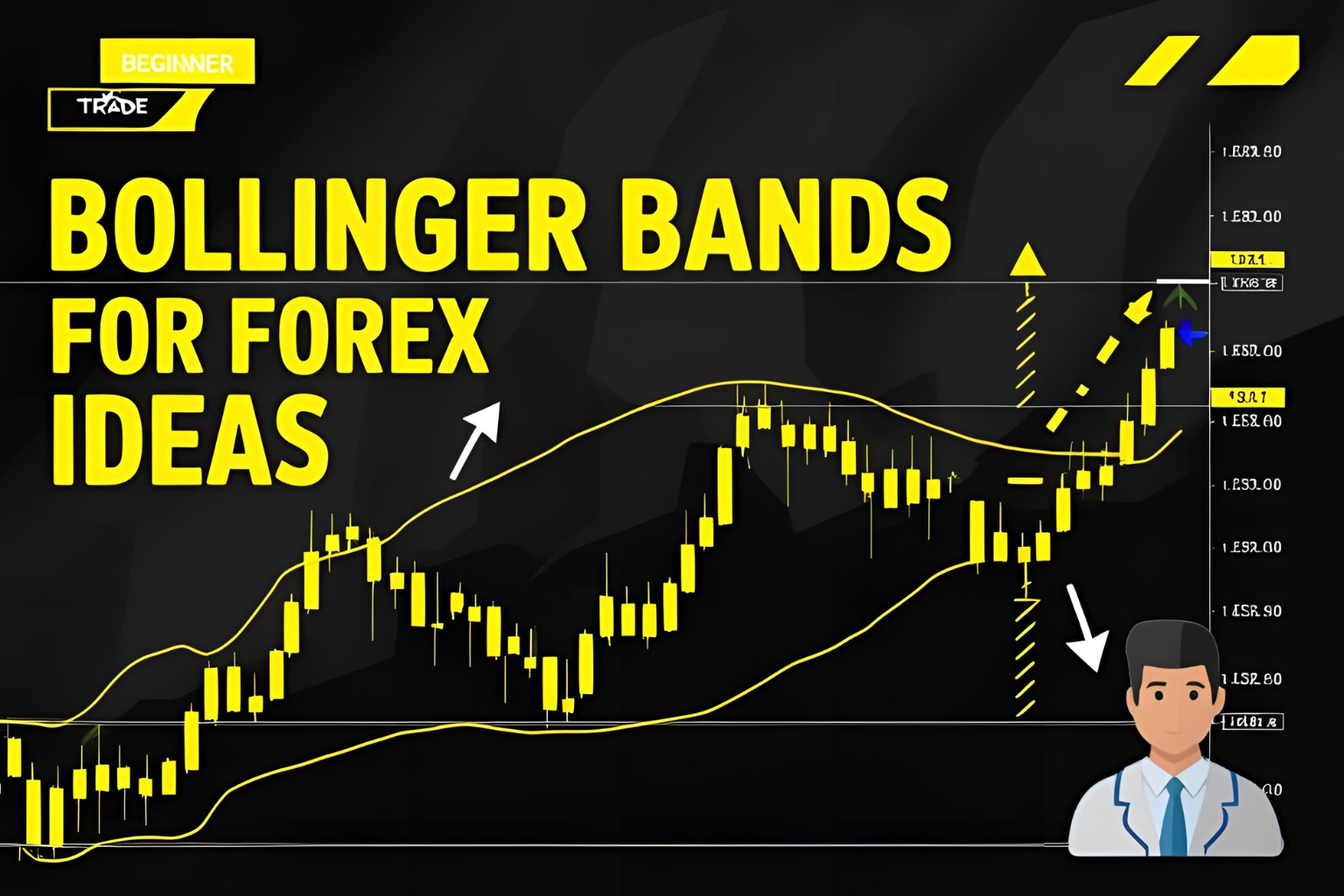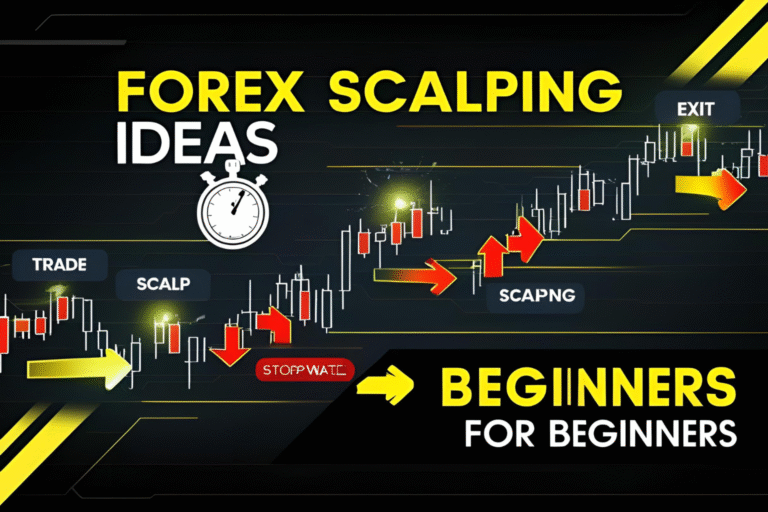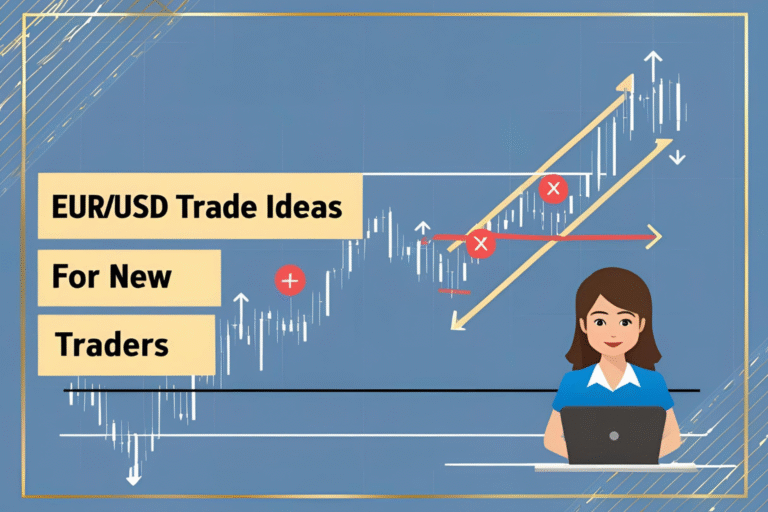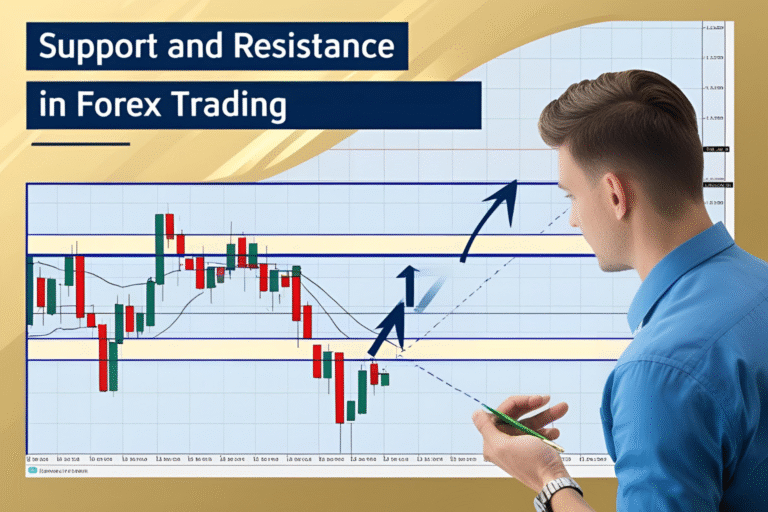Using Bollinger Bands for Forex Trade Ideas
Bollinger Bands are a popular technical analysis tool that helps traders understand volatility and identify potential breakout or reversal opportunities. In forex trading, Bollinger Bands work particularly well on liquid pairs like EUR/USD, GBP/USD, and USD/JPY. This guide introduces simple and effective trade ideas using Bollinger Bands—perfect for new traders.
What Are Bollinger Bands?
Bollinger Bands consist of three lines:
- Middle Band: A 20-period Simple Moving Average (SMA)
- Upper Band: 2 standard deviations above the SMA
- Lower Band: 2 standard deviations below the SMA
These bands expand and contract based on market volatility, making them ideal for identifying compression and explosive moves.
1. Reversal Trades at the Bands
Price often “bounces” when it touches the upper or lower Bollinger Band, especially in ranging markets.
Buy Setup:
- Price hits lower band
- RSI < 30 (oversold)
- Bullish candlestick pattern appears
- Entry: On candle close
- Stop-Loss: Below the band
- Target: Mid-band or upper band
Sell Setup: Same logic applies in reverse when price touches the upper band.
Tip: Avoid this setup during strong trending markets.
2. Bollinger Band Squeeze Breakout Strategy
When the bands contract tightly, it signals low volatility and potential for a breakout.
Setup:
- Wait for Bollinger Bands to squeeze (narrow width)
- Price breaks out above upper band or below lower band with strong volume
- Entry: On breakout candle
- Stop-Loss: Inside the bands
- Target: 2x the width of the band
Best pairs: EUR/USD, USD/JPY, and GBP/USD during the London or New York session.
3. Trend Continuation Using Bollinger Bands + Moving Average
Use the middle band (20 SMA) to spot continuation setups during a trend.
Strategy:
- Identify an uptrend using higher highs and lows
- Wait for price to pull back to the middle band
- Entry: Buy on bounce with bullish candle
- Stop-Loss: Below the middle band
- Target: Retest of upper band or new high
Works well on: 1H and 4H charts for swing trades.
4. Combine Bollinger Bands with RSI or MACD
Confirmation from momentum indicators helps filter false signals.
Example:
- Price touches upper band
- RSI shows bearish divergence
- MACD crosses below signal line
- Suggests potential reversal = short setup
FAQs
What settings should I use for Bollinger Bands?
Default settings (20 SMA, 2 standard deviations) work well for most forex pairs.
Do Bollinger Bands work better in trending or ranging markets?
Reversal trades work best in ranging markets. Squeeze breakouts are effective in volatile trending environments.
What timeframes are best?
For beginners, 15-minute to 4-hour charts offer the best balance of clarity and frequency.
Can I use Bollinger Bands for scalping?
Yes. On 1-minute or 5-minute charts, use band bounces or squeeze breakouts for quick scalps.
Should I rely only on Bollinger Bands?
No. Combine them with price action, support/resistance, and momentum indicators for stronger trade signals.




